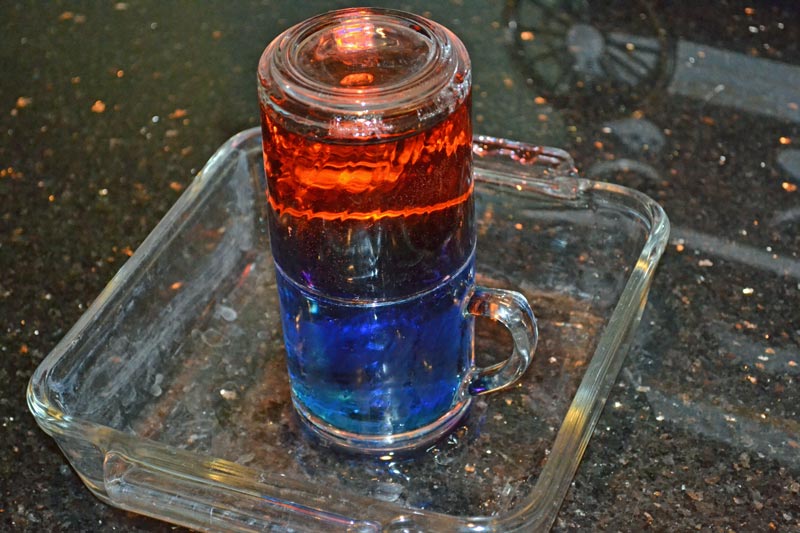
2
DifficultyHot and Cold Water Density - Teach Kids How Temperature Effects Water Density
Posted by Admin / in Matter Experiments
An experiment to teach kids about the difference in density between hot and cold water and the natural flow of warmer or cooler water.
Materials Needed
- Two clear cups of equal size
- Index card or wax paper
- Food coloring (2 colors-blue and red)
- Hot water
- Cold water
- Casserole pan
EXPERIMENT STEPS
Have an adult help with this experiment since hot water will need to be handled.
Step 1. Place a full cup of water in the freezer or refrigerator and allow it to cool for 15 minutes.
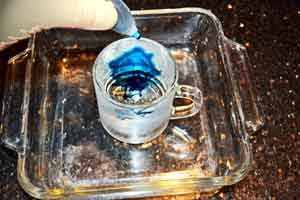
Step 2. Remove the water from the freezer and mix with a few drops of blue food coloring.
Step 3. Heat up a full cup of water. Have an adult help heat the water either in a microwave oven or on the stove. Hot tap water will work it if is very hot. Handle the hot water very carefully.
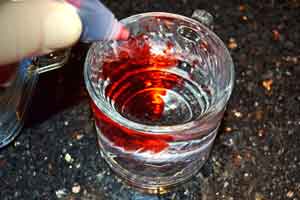
Step 4. Mix the hot water with a few drops of red food coloring.
Step 5. Place the cold (blue) water cup in the bottom of the casserole pan.
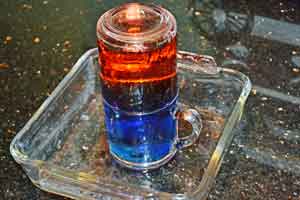
Step 6. Carefully hold the index card on top of the hot (red) water and flip it upside down, resting the cup on top of the cold (blue) water cup. If the cup opening size is larger than an index card, a piece of wax paper will also work for this step, however, if the wax paper stays in contact with hot water too long it will quickly start to stick to the cup.
Step 7. Quickly remove the index card allowing the cold water and hot water to mix. Observe what happens to the different temperature water.
SCIENCE LEARNED
Different temperature water has different density. The normal density of water is 62.4 pounds per cubic foot. Warmer water is less dense and will have a lower weight per cubic foot of space. Colder water is more dense and will weight more for each cubic foot of space. When the index card is removed between the hot and cold water, nothing really happens. The hot water stays elevated above the colder (blue) water. The cold water is more dense than the hot water. The red and blue coloring will stay separated until the water temperatures start to even out. This will actually take quite a while if the very hot and reasonably cold water is used for the experiment. The experiment cannot really be performed with the hot water starting on the bottom. The hot water will rise, but in the process the red food coloring will mix with the blue food coloring in the cold water and result in purple water.
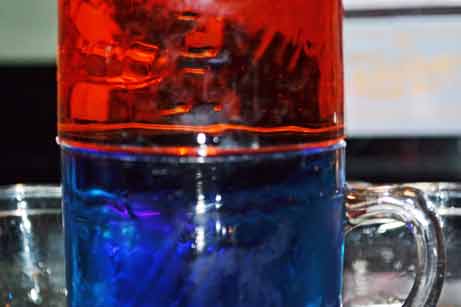
-
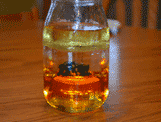
3
DifficultyLiquid Density Experiment
Experiment with the density of different types of liquids.
-
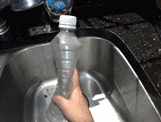
1
DifficultyAir Pressure Experiment
Simple Experiment with a good visual demonstration of changing air pressure.
-
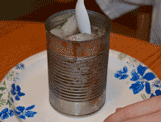
2
DifficultyWater Cycle Experiment
Experiment to show all the phases of the water cycle.
